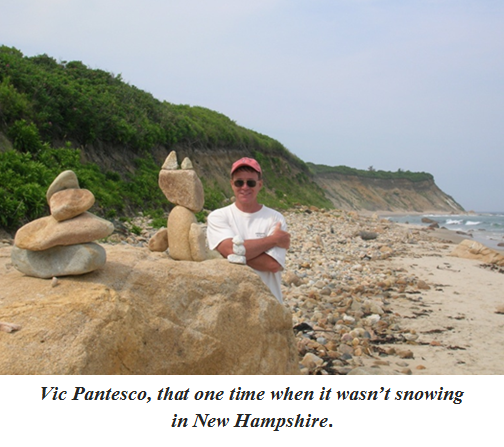The
Briar Patch: Thorny Challenges for Directors
Vic Pantesco,
Ph.D.
They Keep Getting Younger
Many clinics experience
the general trend in the field to have younger and younger
applicants to the doctoral programs. I mean this in
both chronological and maturational terms. This may
reflect prescience within the
developmentally-sensitive competencies movement and
competency-based evaluations in practicum clinics.
There are multiple challenges arising from this phenomenon,
presenting recognizable pressures to educate these young
clinicians in areas ranging from proper boundaries (in both
“old fashioned” as well as social media interactions) to
navigating their youth and inexperience in the predictably
stormy provocations of older clients.
How many of us have sat in supervision
with someone who looks and sounds like they are sixteen
years old as you observe them trying to be professional and
credible to an emotionally exhausted couple in their 50’s?
(That’s meant to be a rhetorical
question.) We often wonder to what degree
having good hearts (as Don Peterson prescribed for all
clinical psychology doctoral applicants) and intellectually
strong raw material is enough. How do we train within
and about the simple life gaps? What does a
professional “voice” look like at such an early age?
What do we realistically expect? Are we being ethical
in pairing such a youngster with a complex trauma case?
Dulling the
Thorn
I already
mentioned one help to us here: having a strong faculty
supervisors team that meets, supports, engages the
conversation. Perhaps an anomaly, our group of six
supervisors has been together for 13 years. We rely on
each other a lot. We are able to talk at levels of
exposure well suited to both honesty and clarity of goals and
possibilities. As a result of these, we have arrived at
specific aspirations and orientations.
We first will not dilute our training of the
students, and this at times means pushing and confronting in
ways to speed yet not compromise their insights and
abilities. This predictably invites harder discussions
with students as a team and in supervision, but we feel it is
worth it. At times we just have to be clear and tell
someone it is not therapeutically helpful or ethical to sit with
clients in a bar. As out of fashion direct “no” messages
can be, they remain attention getters if not crucial at times.
New this year, we have been using Clara
Hill’s Helping Skills as a text that has chapters to be read
weekly and then brought into supervision. For example, in
listening to a recording it is common for us to stop and point
out how an exploration nicely fed the next interpretation, or
not. So far, supervisors and students are responding well
to this addition.
Finally, we hang on to our own perspectives
of our histories and the mentors we had who tolerated, inspired,
corrected, and modeled for us in ways that mattered,- regardless
of our age or our own notions of our skills or maturity.

